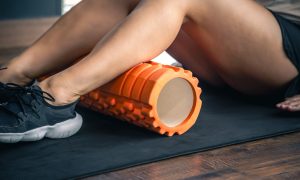Attention Deficit Hyperactivity Disorder (ADHD) is a recognised and complex neurodifference defined in the DSM-5 by several criteria including difficulty maintaining sustained focus and attention, easily distracted, difficulty following multi-step auditory directions, and challenges with organising and following through with tasks and activities. No two people are the same with ADHD, and boys and girls will present differently. In fact, hyperactivity is not always present. There’s a subset of ADHD called “inattentive” in which people don’t have hyperactivity but simply a mind that works in a different way than neurotypicals.
While these challenges are real, many people living with ADHD say that it’s not a disorder but a superpower because they are often very creative and have an ability to hyper focus on interesting tasks and information leading to engaging, meaningful work and sometimes breakthroughs. Many people with ADHD are very intelligent but might get wrongly labelled as “lazy” or “slow” when in fact they’re working very hard and just hyper aware of everything around them.
A performer with ADHD might have new choreography rapidly taught to them and is hyperfocusing on the footwork, while also noting the ticking of the clock in the back of the room and dealing with a scratchy tag in their clothes. Their peers in the room have already moved on to the next 16 counts, and the person with ADHD is still on the first 8 counts. They’re not slow; they’re just far more aware of distracting details in their environment.
Research on ADHD shows the positive impact of nutrition, food and lifestyle choices. Many people find that medication can help them, too. Talk to your health care provider to see what is right for you.
Food choices
Eat regularly starting with a good morning meal. Stabilising blood sugar helps with executive functioning, energy and mood. Some people with ADHD might forget to eat or have a low appetite due to medications, so setting a reminder timer at regular intervals of 3-4 hours through the day can help. Minimally processed whole fruits, vegetables, whole grains, beans, legumes, nuts and seeds is a good strategy that reduces inflammation, improves brain function and promotes focus. Broccoli and sprouts contain a compound studied for improving brain function and reducing inflammation. Limiting sugar can help, too. While we never want to vilify foods, we do want to consider whether we might be eating too much sugar. Sugar can be fine in moderation, but it can increase hyperactivity for some with ADHD, and depletes magnesium. Sugar can affect dopamine (the “feel good” neurotransmitter) when consumed in excess. Heavily processed sugary foods can contain artificial food dyes, dough conditioners and preservatives that do affect the brain’s focus. Hydration significantly affects executive function, so drink at least 3-4 large water bottles per day.
Protect the gut
Fibre is found only in plant foods like fruits, vegetables, beans and whole grains. Its positive impact on the gastrointestinal (GI) system cannot be overstated. The health of the GI system and the types of microbes (probiotics) that live there has a direct relationship to good mental health, concentration and focus. Eating fibre is the best way to increase the types of good bacteria that promote a healthy gut and therefore can reduce ADHD symptoms. If shopping for a probiotic, look for one with L. rhamnosus GG strains of Bifidobacterium like B. longum. Taking supplemental probiotics isn’t enough. Fibre is the missing link to changing the gut microbiome. Add fruit to breakfast. Add veggies and fruit to lunch, and double portions of veggies at dinner with a whole grain and beans. Try some of the Buddha bowl recipes found on the internet.
Identifying food allergies or sensitivities
Finding out what foods you as an individual might be sensitive to with the help of a dietitian can potentially reduce gastrointestinal irritation/ inflammation and/or immune response. The gut-brain connection is very real, and more than half of the body’s dopamine is made in the gut. For some people, proteins like gluten in wheat, barley and rye, and/or casein in cow’s milk dairy can potentially be triggering foods. Less than 25 percent of people have food allergies or intolerances. Don’t just eliminate otherwise healthy foods without replacing those nutrients with other choices. If you’re doing a gluten-free trial eliminating wheat, barley and rye, then replace those grains with gluten-free ones like buckwheat, rice, quinoa, oats and other GF whole grains. If you try a dairy-free trial, then get adequate calcium from foods like soy, beans, greens, almonds and dairy substitutes. Caution needs to be taken with dancers trying any food elimination diet. Please consult a registered dietitian first.
Supplemental nutrients that help ADHD
There are many nutrients that have been shown to improve ADHD symptoms. If someone only had the budget for three supplements, these are my top picks in order of importance:
Vitamin D3
Vitamin B6 and B12
Omega 3s DHA/ EPA
Phosphatidylserine and phosphatidylcholine
Vitamin C
Iron
Zinc
Magnesium glycinate taken at night is good for sleep and mood
Magnesium threonate taken in the morning is good for learning, memory and energy
Essential fatty acids
Healthy dietary fats are essential for the central nervous system and cellular function. Omega-3s have been shown to be low in people with ADHD. Raising these levels can improve symptoms. Choose foods like flax, chia and hemp seeds, nuts, eggs, and cold water fish like salmon. Phosphatidylserine and phosphatidylcholine help brain cells communicate with each other and reduce stress and anxiety. These can be found in supplements, eggs, white beans and soy.
Mindfulness practices
Meditation, yoga, breathing techniques and focused awareness are techniques shown to positively affect focus, attention, learning and memory. When practiced regularly, they can reduce ADHD symptoms for months. Apps like Calm and Headspace to help busy people find ways to bring these practices into their daily life. Start with just 10 minutes of meditation or breathing techniques 3-4 days a week, and work your way up to more.

By Emily C. Harrison MS, RDN, LDN of Nutrition for Great Performances.
Emily Cook Harrison MS, RD, LD
Emily is a registered dietitian and holds both a bachelor’s and master’s degree in nutrition from Georgia State University, USA. Her master’s thesis research was on elite level ballet dancers and nutrition and she has experience providing nutrition services for weight management, sports nutrition, disordered eating, disease prevention, and food allergies. Emily was a professional dancer for eleven years with the Atlanta Ballet and several other companies. She is a dance educator and the mother of two young children. She now runs the Centre for Dance Nutrition and Healthy Lifestyles. She can be reached at emily@dancernutrition.com
www.dancernutrition.com
Sources:
- Centers for Disease Control and Prevention: Attention Deficit/ Hyperactivity Disorder Symptoms and Diagnosis. 2023. https://www.cdc.gov/ncbddd/adhd/diagnosis.html
- National Institute of Mental Health: Attention Deficit/ Hyperactivity Disorder https://www.nimh.nih.gov/health/statistics/attention-deficit-hyperactivity-disorder-adhd
- Archer, Amy RDN. An Integrative & Functional Nutrition Approach to ADHD Management. 2021.
- Hinshaw, Stephen P PhD. Straight Talk about ADHD in Girls. 2022
- Bull-Larsen, Stephanie; Mohajeri M, Hasan. The Potential Influence of the Bacterial Microbiome on the Development and Progression of ADHD. Nutrients. 2019














